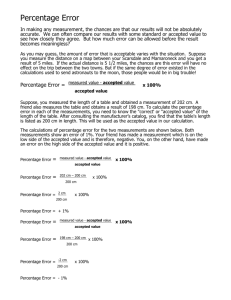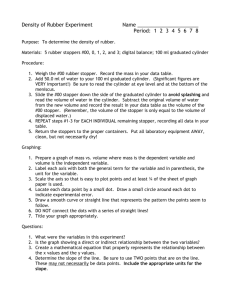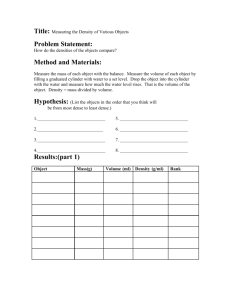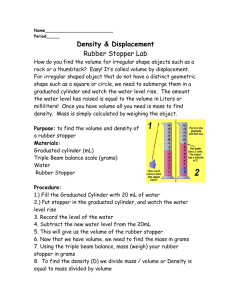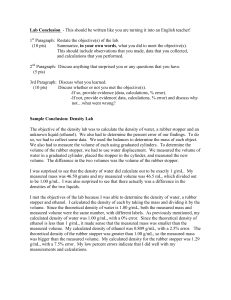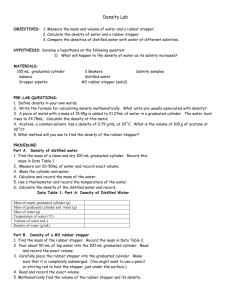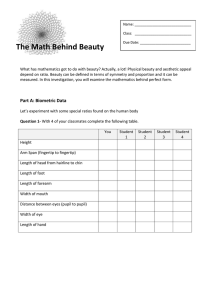Metric Lab
advertisement
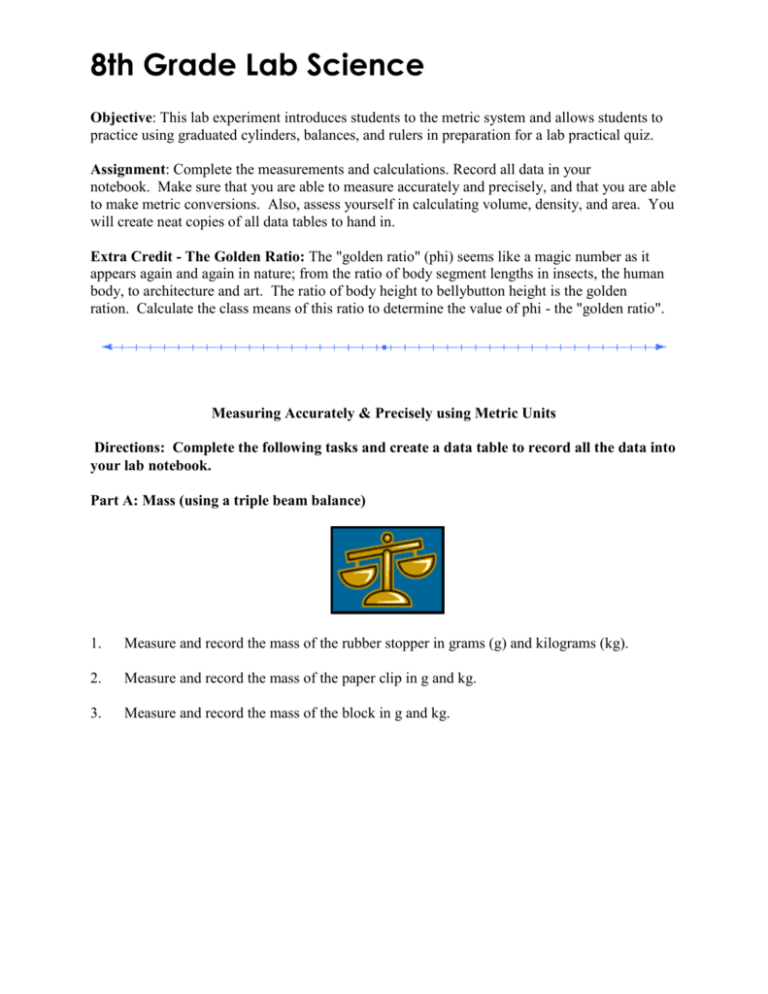
8th Grade Lab Science Objective: This lab experiment introduces students to the metric system and allows students to practice using graduated cylinders, balances, and rulers in preparation for a lab practical quiz. Assignment: Complete the measurements and calculations. Record all data in your notebook. Make sure that you are able to measure accurately and precisely, and that you are able to make metric conversions. Also, assess yourself in calculating volume, density, and area. You will create neat copies of all data tables to hand in. Extra Credit - The Golden Ratio: The "golden ratio" (phi) seems like a magic number as it appears again and again in nature; from the ratio of body segment lengths in insects, the human body, to architecture and art. The ratio of body height to bellybutton height is the golden ration. Calculate the class means of this ratio to determine the value of phi - the "golden ratio". Measuring Accurately & Precisely using Metric Units Directions: Complete the following tasks and create a data table to record all the data into your lab notebook. Part A: Mass (using a triple beam balance) 1. Measure and record the mass of the rubber stopper in grams (g) and kilograms (kg). 2. Measure and record the mass of the paper clip in g and kg. 3. Measure and record the mass of the block in g and kg. 8th Grade Lab Science Part B: Volume (using a graduated cylinder and ruler) 4. Measure and record the length, width and height of the block in centimeters (cm) and millimeters (mm). Calculate the volume of the block in cm3, mm3, and mL. 5. Using water displacement, measure the volume of the rubber stopper in mL. 6. Using water displacement, measure the volume of the paper clip. 7. Measure precisely 47 mL of water in a graduated cylinder. Diagram the graduated cylincer from the side. Part C: Density (calculate using the formula, density = mass / volume) 8. Use the mass and volume data above to calculate the density of the rubber stopper in g / mL and kg / L. 9. Use the mass and volume data above to calculate the density of the paper clip in g /mL and kg / L. 10. Use the mass and volume data above to calculate the density of the block in g / mL and kg / L. Part D: Area (calculate using the formula, area = length x width) 11. Measure and record the length and width of the index card in cm and mm. Calculate the area of the index card in cm2and mm2. 12. Measure and record the length and width of your textbook in cm and m. Calculate the area 8th Grade Lab Science of the index card in cm2 and m2. Part E: Misc. 13. As accurately as you can, measure the surface area of the entire classroom floor in m2. Convert to hectares. 14. Measure and record the height of each member of your lab group in cm and m. Measure & record the height of each group member's bellybutton! 15. Measure and record the room temperature in Celsius degrees. 16. On the floor in the lab, use tape to mark a square meter. Estimate how many people could stand inside the square at once.
